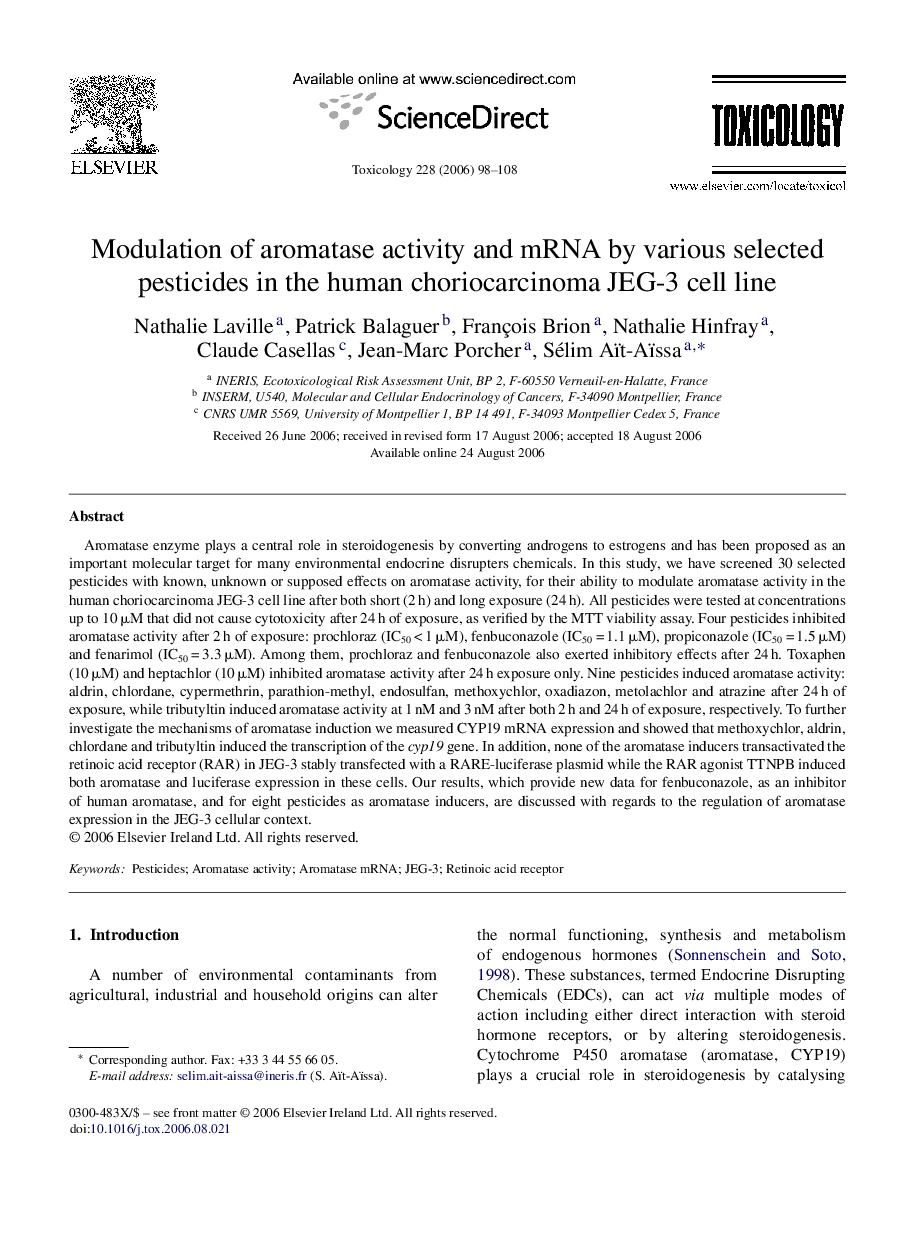| کد مقاله | کد نشریه | سال انتشار | مقاله انگلیسی | نسخه تمام متن |
|---|---|---|---|---|
| 2597690 | 1132595 | 2006 | 11 صفحه PDF | دانلود رایگان |

Aromatase enzyme plays a central role in steroidogenesis by converting androgens to estrogens and has been proposed as an important molecular target for many environmental endocrine disrupters chemicals. In this study, we have screened 30 selected pesticides with known, unknown or supposed effects on aromatase activity, for their ability to modulate aromatase activity in the human choriocarcinoma JEG-3 cell line after both short (2 h) and long exposure (24 h). All pesticides were tested at concentrations up to 10 μM that did not cause cytotoxicity after 24 h of exposure, as verified by the MTT viability assay. Four pesticides inhibited aromatase activity after 2 h of exposure: prochloraz (IC50 < 1 μM), fenbuconazole (IC50 = 1.1 μM), propiconazole (IC50 = 1.5 μM) and fenarimol (IC50 = 3.3 μM). Among them, prochloraz and fenbuconazole also exerted inhibitory effects after 24 h. Toxaphen (10 μM) and heptachlor (10 μM) inhibited aromatase activity after 24 h exposure only. Nine pesticides induced aromatase activity: aldrin, chlordane, cypermethrin, parathion-methyl, endosulfan, methoxychlor, oxadiazon, metolachlor and atrazine after 24 h of exposure, while tributyltin induced aromatase activity at 1 nM and 3 nM after both 2 h and 24 h of exposure, respectively. To further investigate the mechanisms of aromatase induction we measured CYP19 mRNA expression and showed that methoxychlor, aldrin, chlordane and tributyltin induced the transcription of the cyp19 gene. In addition, none of the aromatase inducers transactivated the retinoic acid receptor (RAR) in JEG-3 stably transfected with a RARE-luciferase plasmid while the RAR agonist TTNPB induced both aromatase and luciferase expression in these cells. Our results, which provide new data for fenbuconazole, as an inhibitor of human aromatase, and for eight pesticides as aromatase inducers, are discussed with regards to the regulation of aromatase expression in the JEG-3 cellular context.
Journal: Toxicology - Volume 228, Issue 1, 10 November 2006, Pages 98–108